Low Power Methodology
Manual
For System-on-Chip Design
�
Michael Keating • David Flynn • Robert Aitken •
Alan Gibbons • Kaijian Shi
Low Power Methodology
Manual
For System-on-Chip Design
�
David Flynn
ARM Limited
Cambridge
United Kingdom
Alan Gibbons
Synopsys, Inc.
Northampton
United Kingdom
Michael Keating
Synopsys, Inc.
Palo Alto, CA
USA
Robert Aitken
ARM, Inc.
Almaden, CA
USA
Kaijian Shi
Synopsys, Inc.
Dallas, TX
USA
e-ISBN 978-0-387-71819-4
Library of Congress Control Number: 2007928355
ISBN 978-0-387-71818-7
Printed on acid-free paper.
Copyright © 2007 by Synopsys, Inc. & ARM Limited. All rights reserved.
All rights reserved. This work may not be translated or copied in whole or in part without the written
permission of the publisher (Springer Science+Business Media, LLC, 233 Spring Street, New York, NY
10013, USA), except for brief excerpts in connection with reviews or scholarly analysis. Use in
connection with any form of information storage and retrieval, electronic adaptation, computer software,
or by similar or dissimilar methodology now known or hereafter developed is forbidden. The use in this
publication of trade names, trademarks, service marks and similar terms, even if they are not identified as
such, is not to be taken as an expression of opinion as to whether or not they are subject to proprietary
rights.
9 8 7 6 5 4 3 2 1
springer.com
�
TRADEMARKS
Synopsys and NanoSim are registered trademarks of Synopsys, Inc.
ARM and AMBA are registered trademarks of ARM Limited.
ARM926EJ-S, ARM1176JZF-S, AHB and APB are trademarks of
ARM Limited. Artisan and Artisan Components are registered
trademarks of ARM Physical IP, Inc.
“ARM” is used to represent ARM Holdings plc; its operating company
ARM Limited; and the regional subsidiaries ARM INC.; ARM KK;
ARM Korea Ltd.; ARM Taiwan; ARM France SAS; ARM Consulting
(Shanghai) Co. Ltd.; ARM Belgium N.V.; AXYS Design Automation
Inc.; AXYS GmbH; ARM Embedded Technologies Pvt. Ltd.; and
ARM, Inc. and ARM Norway, AS.
All other brands or product names are the property of their respective
holders.
DISCLAIMER
All content included in this Low Power Methodology Manual is the
result of the combined efforts of ARM Limited and Synopsys, Inc.
Because of the possibility of human or mechanical error, neither the
authors, ARM Limited, Synopsys, Inc., nor any of their affiliates,
including but not limited to Springer Science+Business Media, LLC,
guarantees the accuracy, adequacy or completeness of any information
contained herein and are not responsible for any errors or omissions, or
for the results obtained from the use of such information. THERE
ARE NO EXPRESS OR IMPLIED WARRANTIES, INCLUDING,
BUT
OF
MERCHANTABILITY OR FITNESS FOR A PARTICULAR
PURPOSE relating to the Low Power Methodology Manual. In no
event shall the authors, ARM Limited, Synopsys, Inc., or their
affiliates be liable for any indirect, special or consequential damages in
connection with the information provided herein.
WARRANTIES
NOT
LIMITED
TO,
�
Table of Contents
Preface...........................................................................................xv
1 Introduction....................................................................................1
1.1 Overview ....................................................................................................... 1
1.2 Scope of the Problem..................................................................................... 2
1.3 Power vs. Energy........................................................................................... 3
1.4 Dynamic Power ............................................................................................. 4
1.5 The Conflict Between Dynamic and Static Power........................................ 7
1.6 Static Power................................................................................................... 8
1.7 Purpose of This Book .................................................................................. 10
2 Standard Low Power Methods ...................................................13
2.1 Clock Gating................................................................................................ 13
2.2 Gate Level Power Optimization .................................................................. 15
2.3 Multi VDD................................................................................................... 16
2.4 Multi-Threshold Logic ................................................................................ 17
2.5 Summary of the Impact of Standard Low Power Techniques..................... 19
3 Multi-Voltage Design ...................................................................21
3.1 Challenges in Multi-Voltage Designs.......................................................... 22
3.2 Voltage Scaling Interfaces – Level Shifters................................................. 22
3.2.1 Unidirectional Level Shifters ......................................................... 23
�
viii
Low Power Methodology Manual
Level Shifters – High to Low Voltage Translation......................... 23
3.2.2
Level Shifters – Low-to-High Voltage........................................... 24
3.2.3
Level Shifter Placement ................................................................. 25
3.2.4
3.2.5 Automation and Level Shifters....................................................... 27
3.2.6
Level Shifter Recommendations and Pitfalls ................................. 28
3.3 Timing Issues in Multi-Voltage Designs ..................................................... 29
3.3.1 Clocks............................................................................................. 29
Static Timing Analysis ................................................................... 30
3.3.2
3.4 Power Planning for Multi-Voltage Design .................................................. 30
3.5 System Design Issues with Multi-Voltage Designs..................................... 31
4 Power Gating Overview ..............................................................33
4.1 Dynamic and Leakage power profiles......................................................... 33
4.2
Impact of Power Gating on Classes of Sub-systems................................... 36
4.3 Principles of Power Gating Design ............................................................ 37
Power Switching – Fine Grain vs. Coarse Grain............................ 38
The Challenges of Power Gating.................................................... 39
4.3.1
4.3.2
5.3
5.2
5 Designing Power Gating..............................................................41
5.1 Switching Fabric Design ............................................................................. 42
5.1.1 Controlling the Switching Fabric ................................................... 44
Recommendations and Pitfalls for Power Gating Control ............. 44
5.1.2
Signal Isolation .......................................................................................... 45
5.2.1
Signal Isolation techniques............................................................. 45
5.2.2 Output or Input Isolation ................................................................ 47
5.2.3
Interface Protocols and Isolation.................................................... 48
5.2.4 Recommendations and Pitfalls for Isolation................................... 50
State Retention and Restoration Methods ................................................... 50
5.3.1
State Retention Using Scan Chains ................................................ 51
5.3.2 Retention Registers......................................................................... 54
5.3.3
Power Controller Design for Retention.......................................... 56
Partial vs. Full State Retention ....................................................... 56
5.3.4
System Level Issues and Retention ................................................ 58
5.3.5
Recommendations and Pitfalls for State Retention........................ 58
5.3.6
Power Gating Control.................................................................................. 59
Power Control Sequencing.............................................................. 60
5.4.1
5.4.2 Handshake Protocols ...................................................................... 61
Recommendations and Pitfalls for Power Gating Controllers ....... 63
5.4.3
Power Gating Design Verification – RTL Simulation................................. 63
5.4
5.5
�
Low Power Methodology Manual
ix
5.5.1
5.5.2
Inferring Power Gating Behavior in RTL....................................... 64
Inferring Power Gating and Retention Behavior in RTL ............... 68
5.6 Design For Test considerations ................................................................... 70
Power Gating Controls ................................................................... 70
Power Limitations during Scan Test............................................... 71
Testing the Switching Network ...................................................... 71
Testing Isolation and Retention ...................................................... 72
Testing the Power Gating Controller.............................................. 73
5.6.1
5.6.2
5.6.3
5.6.4
5.6.5
6 Architectural Issues for Power Gating ......................................75
6.1 Hierarchy and Power Gating ....................................................................... 75
Power Networks and Their Control............................................................. 78
6.2
External Power Rail Switching....................................................... 79
6.2.1
On-chip Power Gating.................................................................... 81
6.2.2
6.3 Power State Tables and Always On Regions............................................... 82
7 A Power Gating Example............................................................85
Leakage Modes Supported .......................................................................... 85
7.1
7.2 Design partitioning ...................................................................................... 88
7.3 Isolation ....................................................................................................... 92
7.4 Retention...................................................................................................... 94
7.5 Inferring Power Gating and Retention ....................................................... 95
7.6 Measurements and Analysis........................................................................ 96
8 IP Design for Low Power ..........................................................101
8.1 Architecture and Partitioning for Power Gating........................................ 102
8.1.1 How and When to Shut Down...................................................... 103
What to Shut Down and What to Keep Alive .............................. 103
8.1.2
8.2 Power Controller Design for the USB OTG.............................................. 105
8.3 Issues in Designing Portable Power Controllers ....................................... 108
8.4 Clocks and Resets ..................................................................................... 109
8.5 Verification ................................................................................................ 109
8.6 Packaging IP for Reuse with Power Intent.................................................110
8.7 UPF for the USB OTG Core ......................................................................111
8.8 USB OTG Power Gating Controller State Machine...................................114
�
x
Low Power Methodology Manual
9 Frequency and Voltage Scaling Design ....................................121
9.1 Dynamic Power and Energy...................................................................... 122
9.2 Voltage Scaling Approaches...................................................................... 125
9.3 Dynamic Voltage and Frequency Scaling (DVFS).................................... 125
9.4 CPU Subsystem Design Issues.................................................................. 129
9.5 Adaptive Voltage Scaling (AVS) ............................................................... 130
9.6 Level Shifters and Isolation....................................................................... 131
9.7 Voltage Scaling Interfaces – Effect on Synchronous Timing.................... 132
9.8
Control of Voltage Scaling ......................................................................... 136
10 Examples of Voltage and Frequency Scaling Design ............139
10.1 Voltage Scaling - A Worked Example for UMC 130nm ........................... 139
10.1.1 ULTRA926 System Design Block Diagram ................................ 140
Voltage/Frequency Range Exploration......................................... 141
10.1.2
10.1.3 Synchronous Design Constraints.................................................. 144
10.1.4 Simulated (predicted) Energy Savings Analysis .......................... 145
Silicon-Measured Power and Performance Analysis................... 145
10.1.5
Silicon-Measured ULTRA926 DVFS Energy Savings Analysis .. 147
10.1.6
10.2 Voltage Scaling – A worked Example for TSMC 65nm........................... 150
ATLAS926 Case Study ................................................................. 150
Voltage/Frequency Range Exploration......................................... 151
Silicon-Measured Power and Performance Analysis.................... 151
10.2.1
10.2.2
10.2.3
11 Implementing Multi-Voltage, Power Gated Designs.............155
11.1 Design Partitioning.................................................................................... 158
11.1.1 Logical and Physical Hierarchy.................................................... 158
11.1.2 Critical Path Timing ..................................................................... 160
11.2 Design Flow Overview.............................................................................. 160
11.3 Synthesis.................................................................................................... 162
11.3.1 Power Intent ................................................................................. 162
11.3.2 Defining Power Domains and Power Connectivity...................... 162
11.3.3 Isolation Cell Insertion ................................................................. 163
11.3.4 Retention Register Insertion......................................................... 164
11.3.5 Level Shifter Insertion.................................................................. 166
11.3.6 Scan Synthesis.............................................................................. 168
11.3.7 Always-On Network Synthesis .................................................... 170
11.4 Multi Corner Multi Mode Optimization with Voltage Scaling Designs.... 171
11.5 Design Planning......................................................................................... 173
�


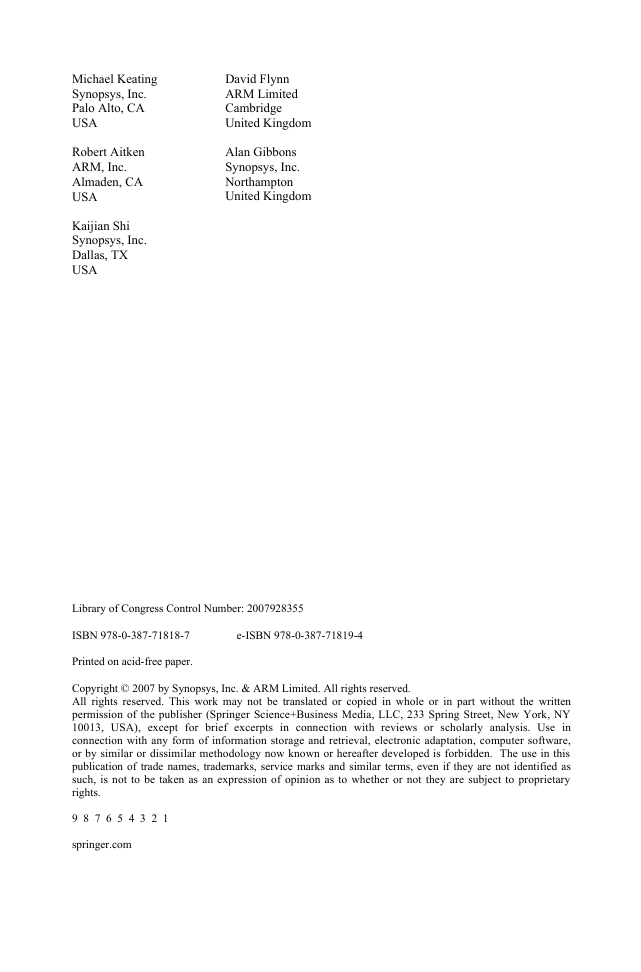
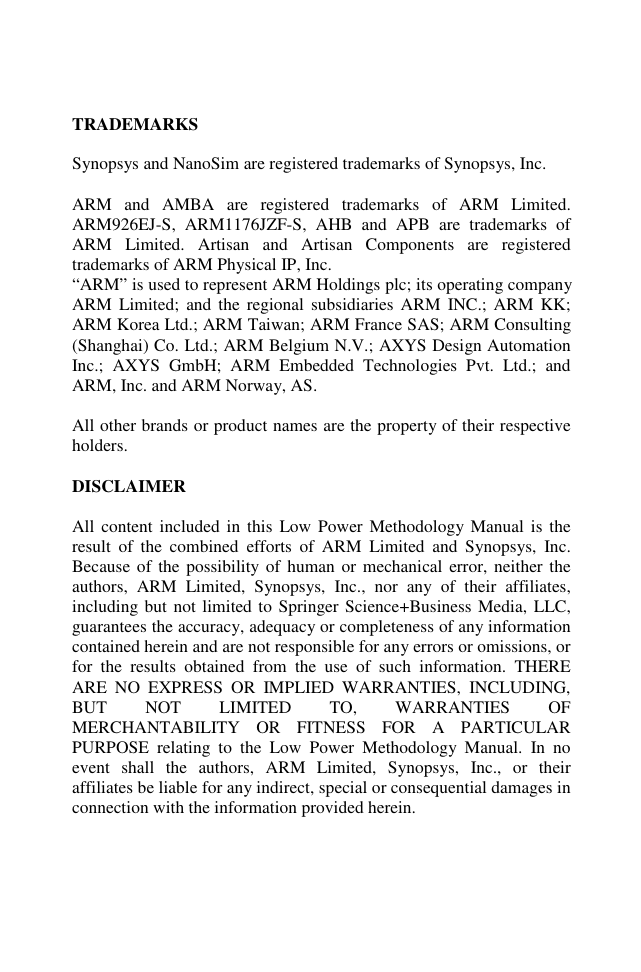
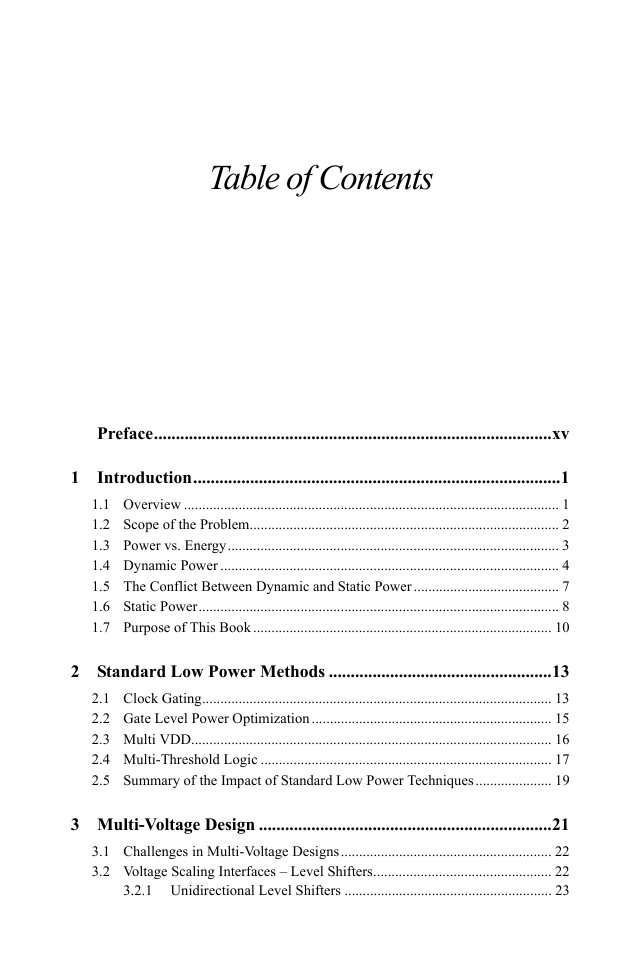
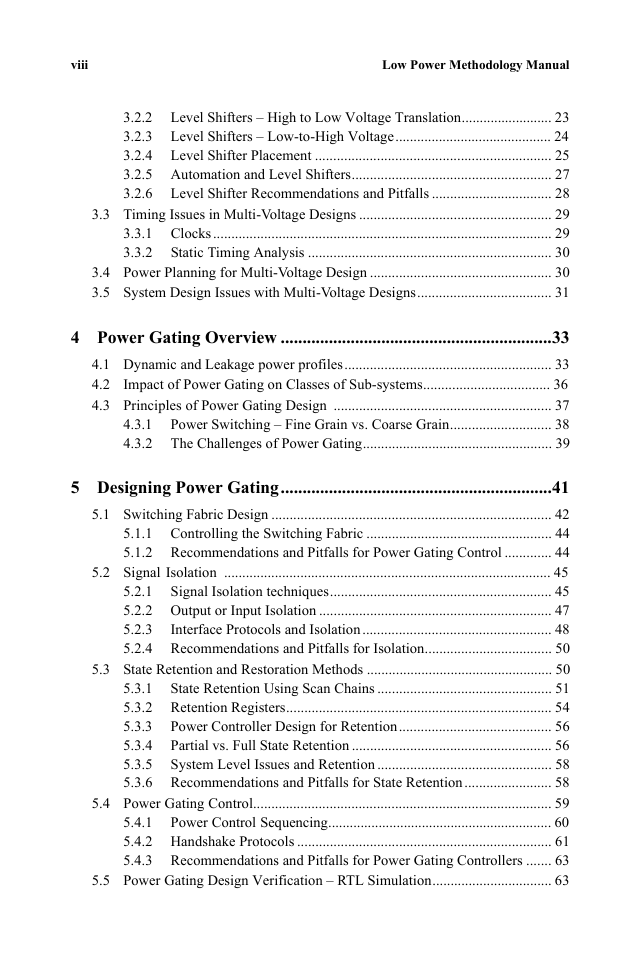
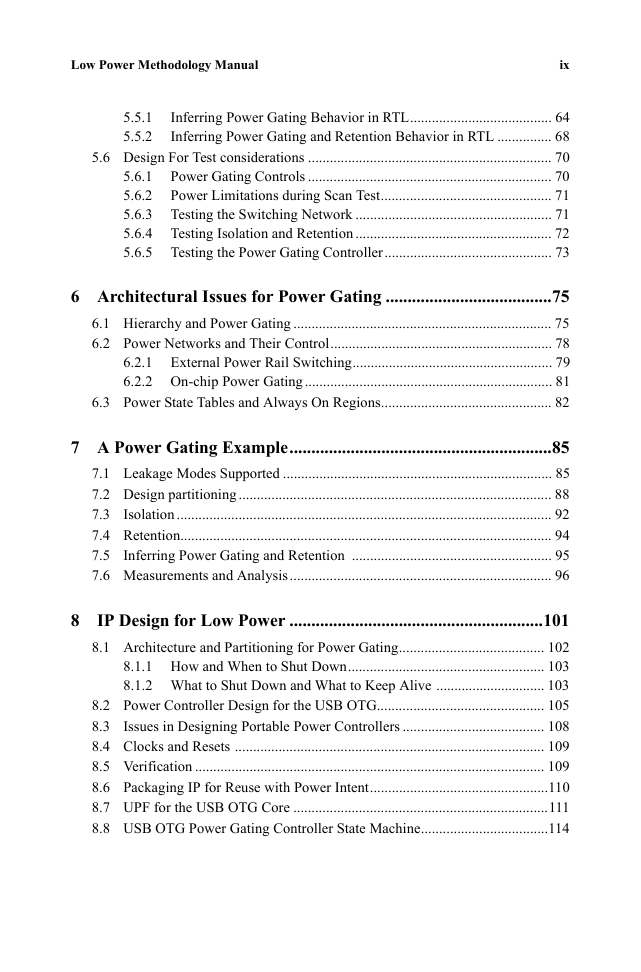
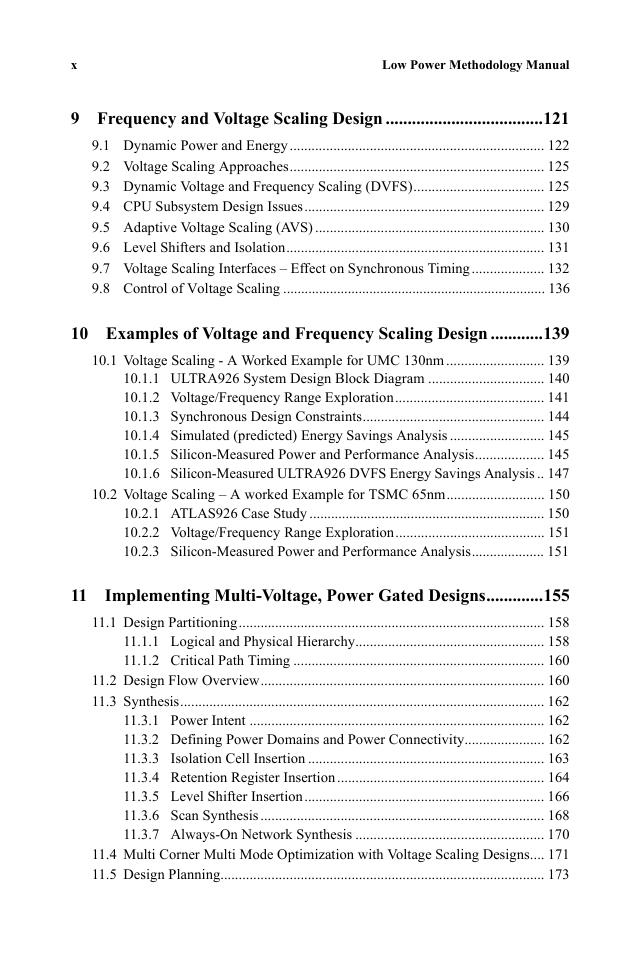








 2023年江西萍乡中考道德与法治真题及答案.doc
2023年江西萍乡中考道德与法治真题及答案.doc 2012年重庆南川中考生物真题及答案.doc
2012年重庆南川中考生物真题及答案.doc 2013年江西师范大学地理学综合及文艺理论基础考研真题.doc
2013年江西师范大学地理学综合及文艺理论基础考研真题.doc 2020年四川甘孜小升初语文真题及答案I卷.doc
2020年四川甘孜小升初语文真题及答案I卷.doc 2020年注册岩土工程师专业基础考试真题及答案.doc
2020年注册岩土工程师专业基础考试真题及答案.doc 2023-2024学年福建省厦门市九年级上学期数学月考试题及答案.doc
2023-2024学年福建省厦门市九年级上学期数学月考试题及答案.doc 2021-2022学年辽宁省沈阳市大东区九年级上学期语文期末试题及答案.doc
2021-2022学年辽宁省沈阳市大东区九年级上学期语文期末试题及答案.doc 2022-2023学年北京东城区初三第一学期物理期末试卷及答案.doc
2022-2023学年北京东城区初三第一学期物理期末试卷及答案.doc 2018上半年江西教师资格初中地理学科知识与教学能力真题及答案.doc
2018上半年江西教师资格初中地理学科知识与教学能力真题及答案.doc 2012年河北国家公务员申论考试真题及答案-省级.doc
2012年河北国家公务员申论考试真题及答案-省级.doc 2020-2021学年江苏省扬州市江都区邵樊片九年级上学期数学第一次质量检测试题及答案.doc
2020-2021学年江苏省扬州市江都区邵樊片九年级上学期数学第一次质量检测试题及答案.doc 2022下半年黑龙江教师资格证中学综合素质真题及答案.doc
2022下半年黑龙江教师资格证中学综合素质真题及答案.doc